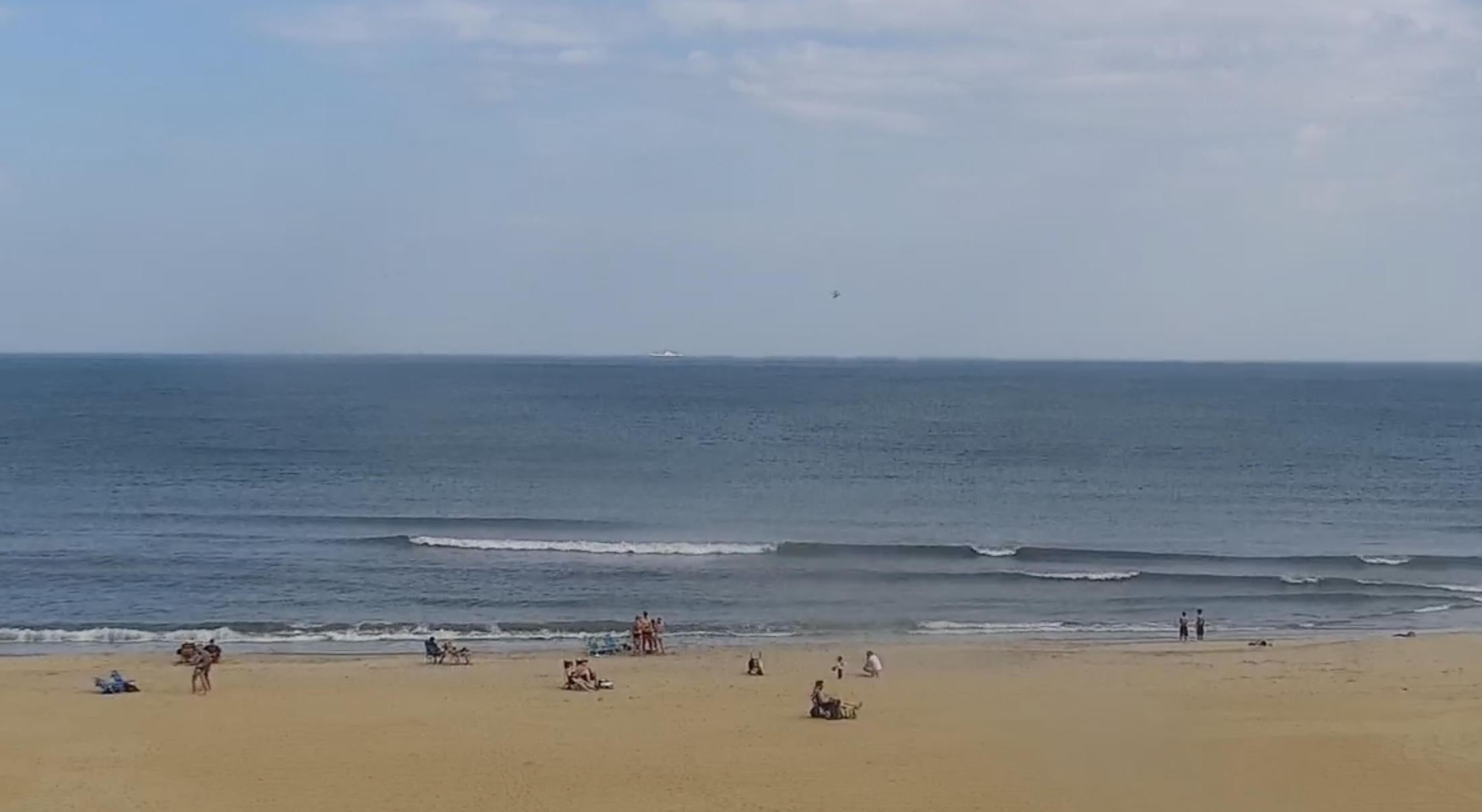Following a working session of the Ocracoke Occupancy Tax Board meeting Wednesday about Hyde County’s request for operating money for a village tram in conjunction with passenger ferry service in 2018, county officials will schedule some community meetings in March about this proposal.
Hyde County is seeking $146,000 to pay for first-year operations for three 23-passenger trams proposed to help shuttle visitors and locals around the village, in addition to what’s offered through private enterprise.
The Occupancy Tax Board will consider Hyde’s request at their April 4 meeting along with all of the other grant proposals from island nonprofits.
Attendance this working session Wednesday, were Tom Pahl, Ocracoke’s county commissioner, Kris Noble, assistant county manager, and Beverly Paul, director of Hyde County Transit, a nonprofit on the mainland that has been identified by the county to manage the proposed tram system. Bill Rich, Hyde County manager, attended by speakerphone.
Several members of the community attended, but no comments or questions were allowed.
During this round-table session, board members noted that many in the community need more information about the whole project.
Bob Chestnut, board chair, said the group had gotten a lot of comments since the prior meeting and it wasn’t all negative.
“There’s a strong feeling that there’s not enough planning,” he said, for stops, shelters and more. There’s also a real fear that this proposal would take away from the needs of island nonprofits and resistance to enacting another 2 percent onto the current Occupancy tax of 3 percent to fund a tram system down the road.
A third theme was that the passenger ferry won’t work, he said.
“Fail safes for capacity and funding all have to be addressed,” he said.
The Ferry Division wants the passenger ferry to work as does the community, Pahl said.
“The ground transportation plan is really important and it’s critical (visitors) have lots of options. (The Ferry Division) care that we have a plan and they’re really flexible as to what that is.”
Several board members noted that to make this a successful venture, it needs community buy-in. “As much as you can get it,” said Stephanie O’Neal. “If you have public meetings you need the right people in place to answer questions. There weren’t enough answers.”
As for the capacity of a tram system, Pahl said the project is not interested in providing all the transportation needs of passenger ferry riders.
“The primary transportation has got to be private,” he said. “It’s got to be a partnership.”
What if passenger ferry riders miss their return trips for whatever reason? Paul said Hyde Transit has a van on the island it can press into service.
Chestnut suggested that there may be too many stops along the proposed route and that maybe a less expensive alternative was to simply have trams going up and down Irvin Garrish Highway.
But Paul said business owners off of the main drag wanted equal access.
Moreover, because this tram would be funded with public money, it would be subject to the Americans with Disabilities Act and would have to be a “deviated fixed route” in order to be within a quarter mile of anyone with a disability who wanted to ride it.
Chestnut mentioned islanders’ concerns for more public restrooms.
Pahl said that it was the planning group’s intent to revise the plan after year one. In year two, with an additional 2 percent of occupancy tax would generate more revenue so that two to three years down the road acquire land to build restrooms.
Hyde County had originally sought $216,000 be granted from Occupancy Tax funds for the first year, but after a meeting Feb. 9 with the OT board, attended by close to 80 islanders, some of whom suggested the county contribute, the county proposed to find $70,000 in its coffers toward in and lowered its request.
The passenger ferry idea came about from all the problems stemming from the long route, Pahl said, particularly cars waiting in line at Hatteras and 10 percent of those leaving the lines.
A longer route of about one hour was officially sanctioned in 2014 after hurricanes Irene (2011) and Sandy (2012) caused so much shoaling in the Hatteras Inlet to make it unnavigable.
Former Ferry Division Director Ed Goodwin floated the passenger ferry idea that year as an alternative for visitors wanting to come to Ocracoke.
The cost of building a passenger ferry is half the cost of a vehicle ferry, Ferry Division officials have said at meetings.
“There’s no magic solution to the problem we’re dealing with,” said Jed Dixon, acting Ferry Division director, at an island meeting Feb. 13 following the departure Jan. 31 of Ed Goodwin. “I understand it’s a change, but if we’re running more boats over here it’s more than what we have now.”
He stressed that he wants Ocracoke’s buy-in.
“I’m not happy with the status quo, but we need your participation and support,” he said. “I’m all in favor of more boats to Ocracoke. You should get behind (the passenger ferry) and get excited about it.”
Dave Hallac, superintendent of the Cape Hatteras National Seashore, said in an email that the Seashore is working on accommodate certain aspects of the passenger ferry project that will occur on lands within the national park.
Specifically, they are working on the following:
1) The location of enhanced parking for passenger ferry vehicles on Hatteras Island,
2) A location for a shade/rain shelter for passenger ferry patrons at the Silver Lake/visitor center area,
3) A possible restroom capacity enhancement at Silver Lake or the visitor center area, and
4) A minor modification to the Silver Lake boat docks to accommodate passenger ferry docking and safe maneuverability














